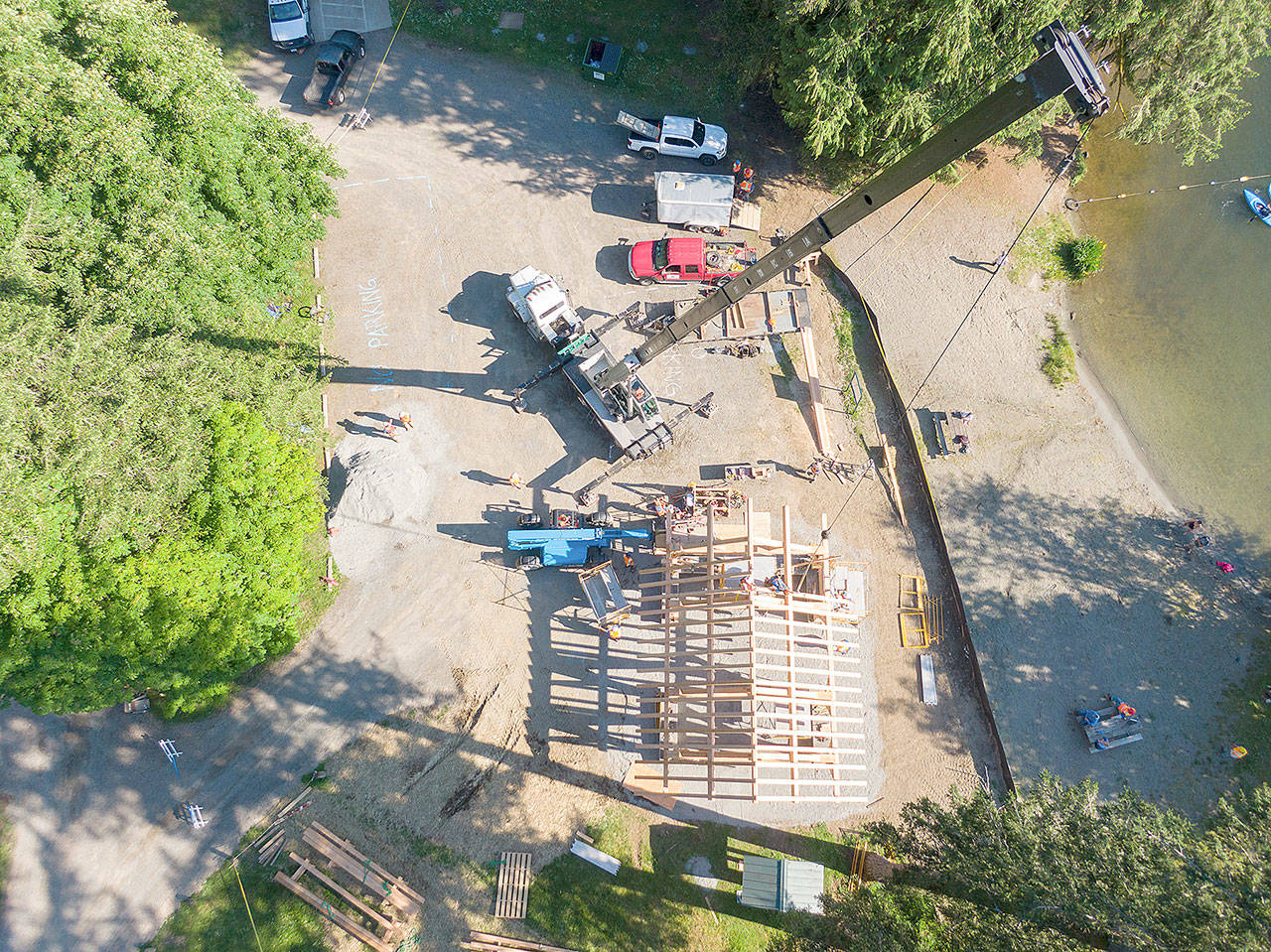MONROE — Trees the Snohomish County parks department cut down for safety or forest health have found new life as picnic shelters and a stage at Lake Roesiger, Whitehorse and Kayak Point county parks.
On Memorial Day, a picnic shelter took form as about 35 volunteers from near and far hoisted up a timber frame made from the trees.
Led by instructors from the Bellingham-based Timber Framers Guild, the volunteers spent a week at the Evergreen State Fairgrounds learning details of the craft and constructing two identical, covered picnic shelters slated for Lake Roesiger County Park and Whitehorse County Park and a small stage for Kayak Point County Park.
Timber framing is a style of construction involving heavy lumber and wood joinery techniques, which are held in place with wooden pegs.
The practice was common until about 1900, when the demand for cheap, fast housing ushered the use of lighter lumber, according to the guild’s website. Today, members of the guild work with local communities and nonprofits to keep timber framing alive.
Raoul Burchette traveled from Apple Valley, California, to attend the guild’s workshop in Monroe.
His interest in timber framing started when he picked up a book on the subject on accident. The aesthetic, as well as the community-oriented process of building, drew him to the craft.
“I was just so excited to get an opportunity to do this hands-on,” Burchette said.
Working eight-hour days or longer, he and the other volunteers shaped massive, 150- to 900-pound beams into the bones for the shelters and stage.
“I didn’t know anything about how to do it or even the idea behind it until we did it,” Burchette said.
After a week of lifting, cutting and hammering, the structure was ready for raising.
The group used a crane to lift sections of the frame into place, each piece fitting together like a puzzle.
“It was very satisfying,” Burchette said.
Volunteers came from as far as Norway to help with the project, guild executive director Mack Magee said.
The organization does about three similar projects a year, either for nonprofits or local governments.
“We do it to teach people how and to spread awareness about timber framing as a modern alternative to common building techniques,” Magee said.
The Lake Roesiger shelter was $95,000 in county funds, according to parks spokesperson Shannon Hays. The Whitehorse shelter and stage for Kayak Point were an additional $55,000.
Most of the lumber came from trees slated to come down at Squire Creek Park near Darrington.
The shelter for Whitehorse Park is scheduled to be installed in 2020.
Julia-Grace Sanders: 425-339-3439; jgsanders@heraldnet.com.
Talk to us
> Give us your news tips.
> Send us a letter to the editor.
> More Herald contact information.


























